Clint Talbott
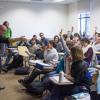 For Svetlana Alexievich, this year's winner of the Nobel Prize in Literature, the Soviet Union is a kind of ‘historical Chernobyl that still produces contamination and radiation—psychological, historical, political and cultural,’ CU-Boulder expert Mark Leiderman observes. He says now is a good time for students and the world to learn more about Russia, and the university has already moved to meet that need.
For Svetlana Alexievich, this year's winner of the Nobel Prize in Literature, the Soviet Union is a kind of ‘historical Chernobyl that still produces contamination and radiation—psychological, historical, political and cultural,’ CU-Boulder expert Mark Leiderman observes. He says now is a good time for students and the world to learn more about Russia, and the university has already moved to meet that need. David Pyrooz, a University of Colorado Boulder sociologist who is advancing the study of terrorism by applying research on criminal gangs, has won an Early Career Award from the American Society of Criminology.
David Pyrooz, a University of Colorado Boulder sociologist who is advancing the study of terrorism by applying research on criminal gangs, has won an Early Career Award from the American Society of Criminology. Sue Baer loves to write, loves children and wants to help others. So it’s no surprise that her newest children’s book tackles a grown-up issue: children with autism. It’s one of many ways she and her husband, Barry, use their time and resources in the service of others.
Sue Baer loves to write, loves children and wants to help others. So it’s no surprise that her newest children’s book tackles a grown-up issue: children with autism. It’s one of many ways she and her husband, Barry, use their time and resources in the service of others. It was just one personal letter, but it reaffirmed, recognized and acclaimed the lifelong work of a professor. “No one outside of my immediate family positively influenced my life more than Professor Smith,” a former student wrote to the professor’s family. “He counseled me at critical times and even rescued me once when I had lost my life’s direction.”
It was just one personal letter, but it reaffirmed, recognized and acclaimed the lifelong work of a professor. “No one outside of my immediate family positively influenced my life more than Professor Smith,” a former student wrote to the professor’s family. “He counseled me at critical times and even rescued me once when I had lost my life’s direction.”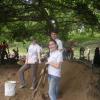 Roman Yavich had accepted an offer to work for an investment bank after graduating from CU-Boulder with degrees in economics and business. But he won a Fulbright Fellowship to study the effect of tourism on the Nicaraguan community, economy and environment. Yavich chose philanthropic work in Nicaragua over a potentially lucrative career in New York. “I never looked back.” Both Nicaragua and tourism have benefitted from his decision.
Roman Yavich had accepted an offer to work for an investment bank after graduating from CU-Boulder with degrees in economics and business. But he won a Fulbright Fellowship to study the effect of tourism on the Nicaraguan community, economy and environment. Yavich chose philanthropic work in Nicaragua over a potentially lucrative career in New York. “I never looked back.” Both Nicaragua and tourism have benefitted from his decision.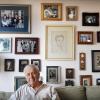 Following four decades of service in a host of roles and several gifts to CU, Bob and Nancy Sievers have made a major capstone contribution to advance the development of the new laboratory and office complex at Colorado Avenue and Foothills Parkway in Boulder, dedicated to sustainability, energy and environmental research.
Following four decades of service in a host of roles and several gifts to CU, Bob and Nancy Sievers have made a major capstone contribution to advance the development of the new laboratory and office complex at Colorado Avenue and Foothills Parkway in Boulder, dedicated to sustainability, energy and environmental research. Adam Bradley is a study in contrasts: a hip-hop expert who grew up in Salt Lake City, dissecting the literary devices of Shakespeare in one breath and Slick Rick in the next. He teaches in English, but his RAP Lab is in the chemistry building.
Adam Bradley is a study in contrasts: a hip-hop expert who grew up in Salt Lake City, dissecting the literary devices of Shakespeare in one breath and Slick Rick in the next. He teaches in English, but his RAP Lab is in the chemistry building. “When people think about Istanbul, they don’t necessarily think about Jewish life,” says Nan Goodman. The professor of English and director of the Program in Jewish Studies is starting to change that.
“When people think about Istanbul, they don’t necessarily think about Jewish life,” says Nan Goodman. The professor of English and director of the Program in Jewish Studies is starting to change that.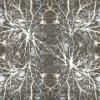 As a liberal undergraduate, Todd D. McIntyre planned to study psychology and then attend law school. He didn’t anticipate becoming so fascinated with science, the brain in particular, that he’d completely change his academic trajectory and then launch a successful career in the pharmaceutical industry, where developing treatments for brain pathologies has been his primary focus. As a liberal undergraduate, McIntyre planned to study psychology and then attend law school. He also didn’t anticipate becoming more conservative.
As a liberal undergraduate, Todd D. McIntyre planned to study psychology and then attend law school. He didn’t anticipate becoming so fascinated with science, the brain in particular, that he’d completely change his academic trajectory and then launch a successful career in the pharmaceutical industry, where developing treatments for brain pathologies has been his primary focus. As a liberal undergraduate, McIntyre planned to study psychology and then attend law school. He also didn’t anticipate becoming more conservative.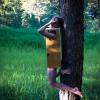 You have to thank Carol Burnett for Michelle Ellsworth’s art. At least in part. Ellsworth, associate professor of dance at the University of Colorado Boulder, has been captivated by dance since she was 7, when she first saw the Ernest Flat Dancers on The Carol Burnett Show. In between the show’s segments, jazz-dance sequences functioned as segues. “I thought, ‘Oh, my gosh. That’s what I want to do for a living.’”
You have to thank Carol Burnett for Michelle Ellsworth’s art. At least in part. Ellsworth, associate professor of dance at the University of Colorado Boulder, has been captivated by dance since she was 7, when she first saw the Ernest Flat Dancers on The Carol Burnett Show. In between the show’s segments, jazz-dance sequences functioned as segues. “I thought, ‘Oh, my gosh. That’s what I want to do for a living.’”

